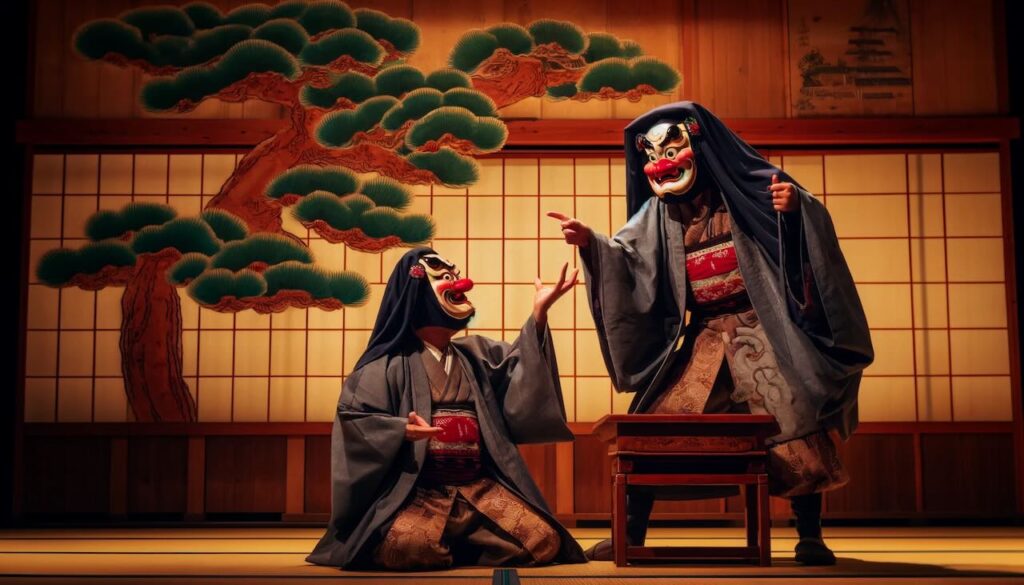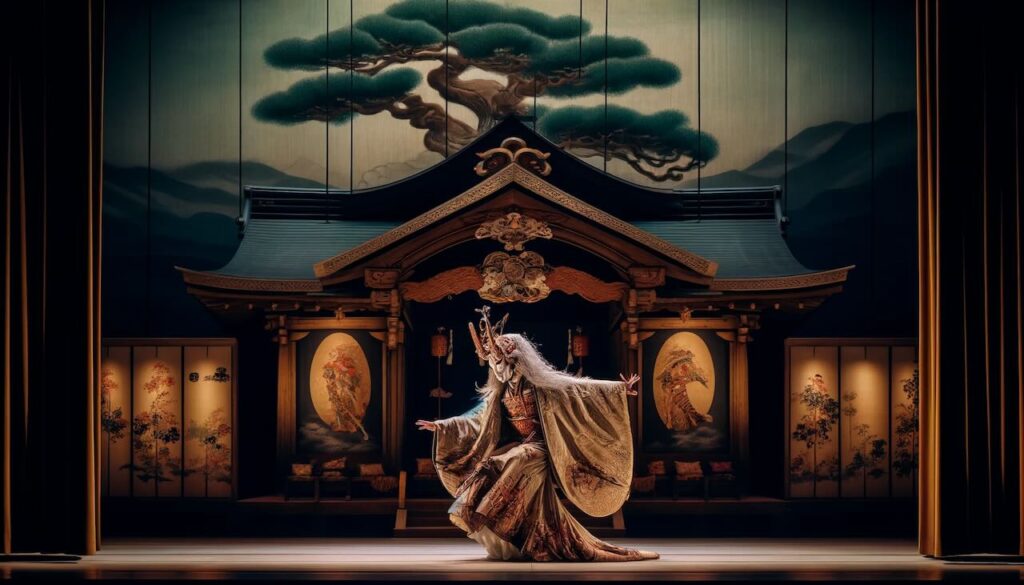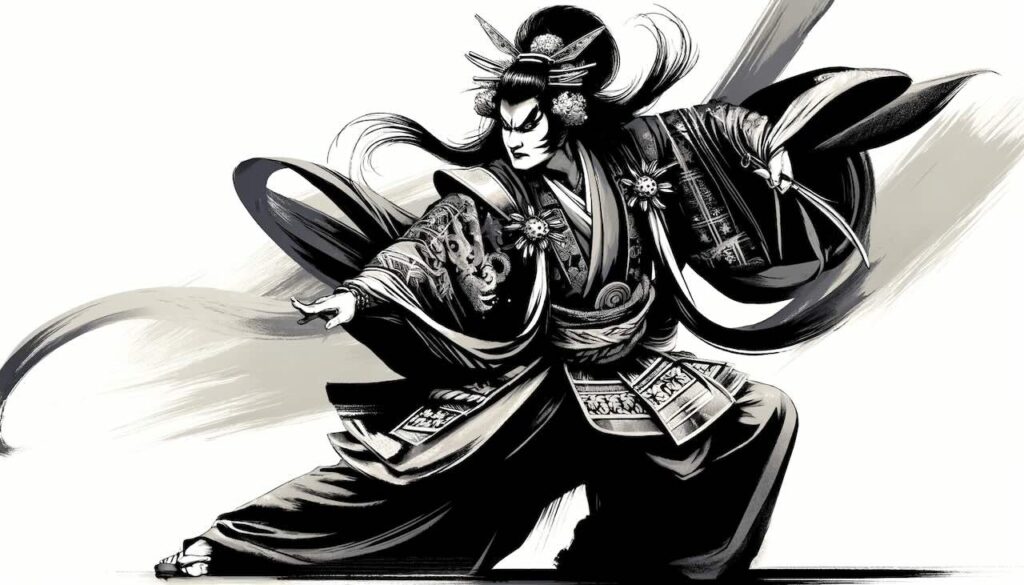While Noh is known for its solemn, spiritual tone, Kyogen is its lively, comedic counterpart—offering laughter, wit, and a glimpse into the everyday lives of common people. Performed on the same stage and often in alternation with Noh plays, Kyogen has delighted audiences for centuries with its sharp humor and theatrical simplicity.
In this article, we’ll explore the meaning of Kyogen, its historical development, and the figures who helped shape this uniquely Japanese art form.
What Does “Kyogen” Mean?
The word Kyogen (狂言) is made up of two characters:
- Kyo (狂) — meaning “madness,” “wildness,” or “absurdity”
- Gen (言) — meaning “words” or “speech”
Together, Kyogen roughly translates to “wild or exaggerated speech.” The name reflects the style’s emphasis on playful language, humorous dialogue, and parody. Unlike the philosophical depth of Noh, Kyogen is grounded in everyday folly, exposing human nature through laughter.
The Origins and Evolution of Kyogen
Early Roots: From Ritual to Satire
Kyogen’s origins date back to the 14th century and evolved out of earlier performance traditions like dengaku and sarugaku, which were folk entertainments performed at religious festivals. While Noh evolved into a high art form focused on gods, ghosts, and courtly tales, Kyogen retained its comic roots, presenting more relatable, down-to-earth themes.
The Muromachi Period (1336–1573)
During the Muromachi period, Kyogen began to take shape as a structured form of comic theater. Importantly, it was Zeami Motokiyo—the great Noh playwright—who helped solidify Kyogen’s place alongside Noh by refining its language and ensuring it was staged between Noh plays. Kyogen became an official part of the Noh-Kyogen double-bill, often serving as comic relief between the more serious Noh acts.
Patronage and Growth: Azuchi-Momoyama to Edo Periods
From the Azuchi-Momoyama (1568–1600) through the Edo period (1603–1868), Kyogen continued to flourish under the patronage of the ruling class. While Noh emphasized refined elegance, Kyogen focused on clever wordplay, slapstick comedy, and satirical takes on authority and social norms.
During this time, Kyogen became codified, with specific family lineages preserving performance styles and scripts across generations.
What Makes Kyogen Unique?
- Minimal props and staging: Like Noh, Kyogen is performed on a simple stage, but the acting is more dynamic and expressive.
- Dialogue-driven: Most Kyogen plays are short, with two to three characters engaging in comical banter or misunderstandings.
- Masks and roles: While masks are less common than in Noh, some stock characters (like demons or spirits) are still portrayed with masks.
- Accessible humor: The plots often center on universal themes like laziness, greed, or foolishness, making Kyogen relatable even today.
Kyogen provides a window into the values, concerns, and humor of medieval Japanese life—one that continues to resonate with modern audiences.
Masters Who Shaped Kyogen
Zeami Motokiyo (c. 1363–c. 1443)
Although better known for Noh, Zeami’s inclusion of Kyogen in formal performance programs helped elevate its status. He recognized the balance of solemnity and humor as essential to a satisfying theatrical experience.
Sagi Kenichiyo (c. 1468–c. 1542)
Regarded as a foundational figure in Kyogen history, Sagi Kenichiyo developed many of the structural forms and plays still performed today. He established the Ōkura school, one of the oldest surviving Kyogen traditions.
Kyogen Lineages of the Edo Period
Family dynasties like the Ōkura Yajūrō, Yamamoto Tōjirō, and Sagi Jinyūemon families were instrumental in refining and passing down Kyogen. Their dedication helped preserve scripts, vocal styles, and movement traditions that are still used in modern performances.
Kyogen Today: Humor That Transcends Time
Kyogen continues to be performed across Japan, both as part of traditional Noh programs and as standalone comedic works. It has also reached international stages, where its minimalism and timeless humor find resonance with global audiences.
Contemporary Kyogen actors are now exploring modern interpretations and translations, introducing new audiences to the art while preserving its core principles.
Conclusion: The Enduring Laughter of Kyogen
Kyogen may have begun as a playful interlude between solemn dramas, but over the centuries it has emerged as a powerful cultural expression in its own right. With roots in medieval Japan, Kyogen captures the human condition through satire, absurdity, and charm—reminding us not to take ourselves too seriously.
By understanding Kyogen’s rich history and appreciating the artistry behind its performances, we gain insight into the lighter side of Japanese tradition—and the enduring power of a well-timed joke.


